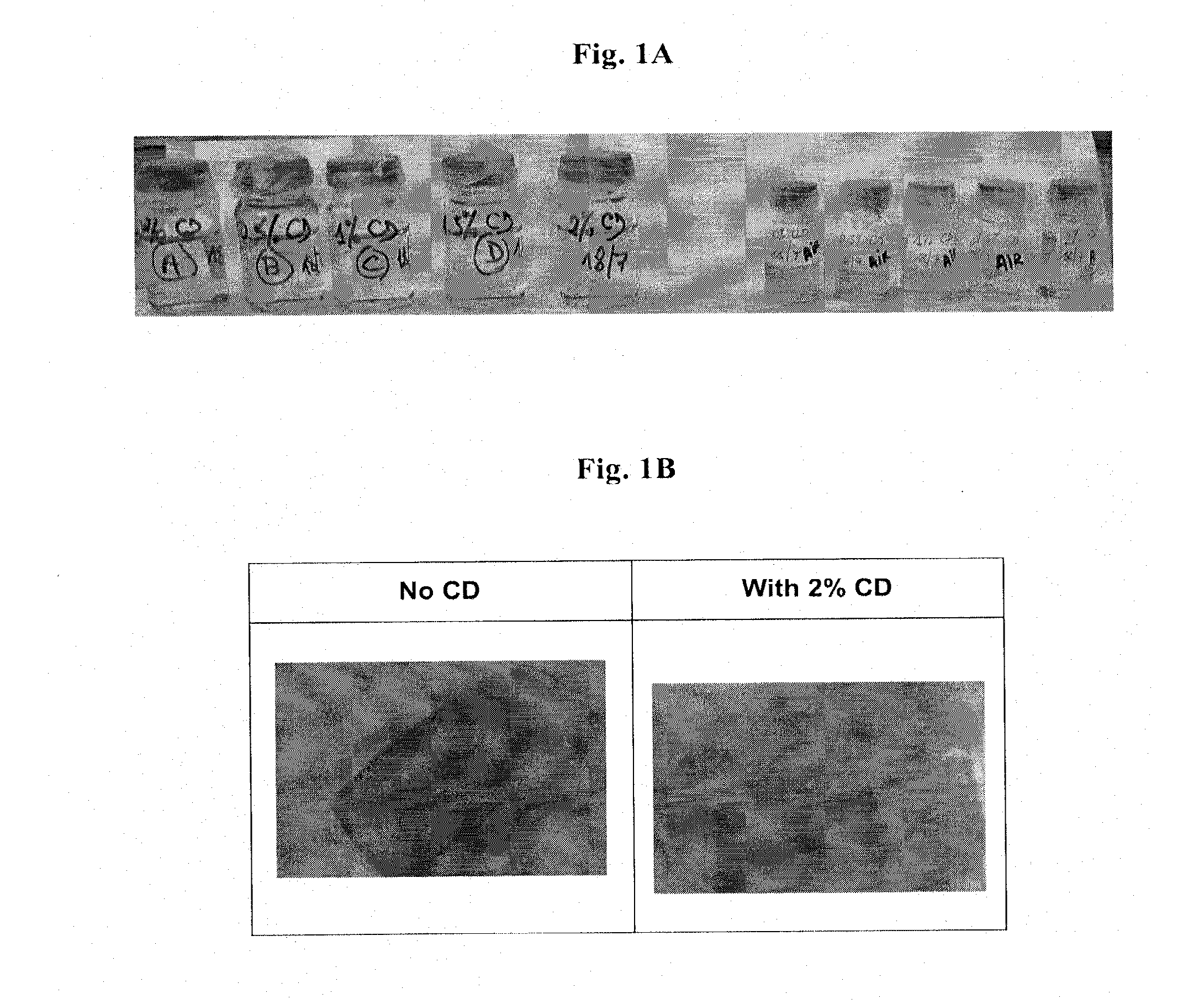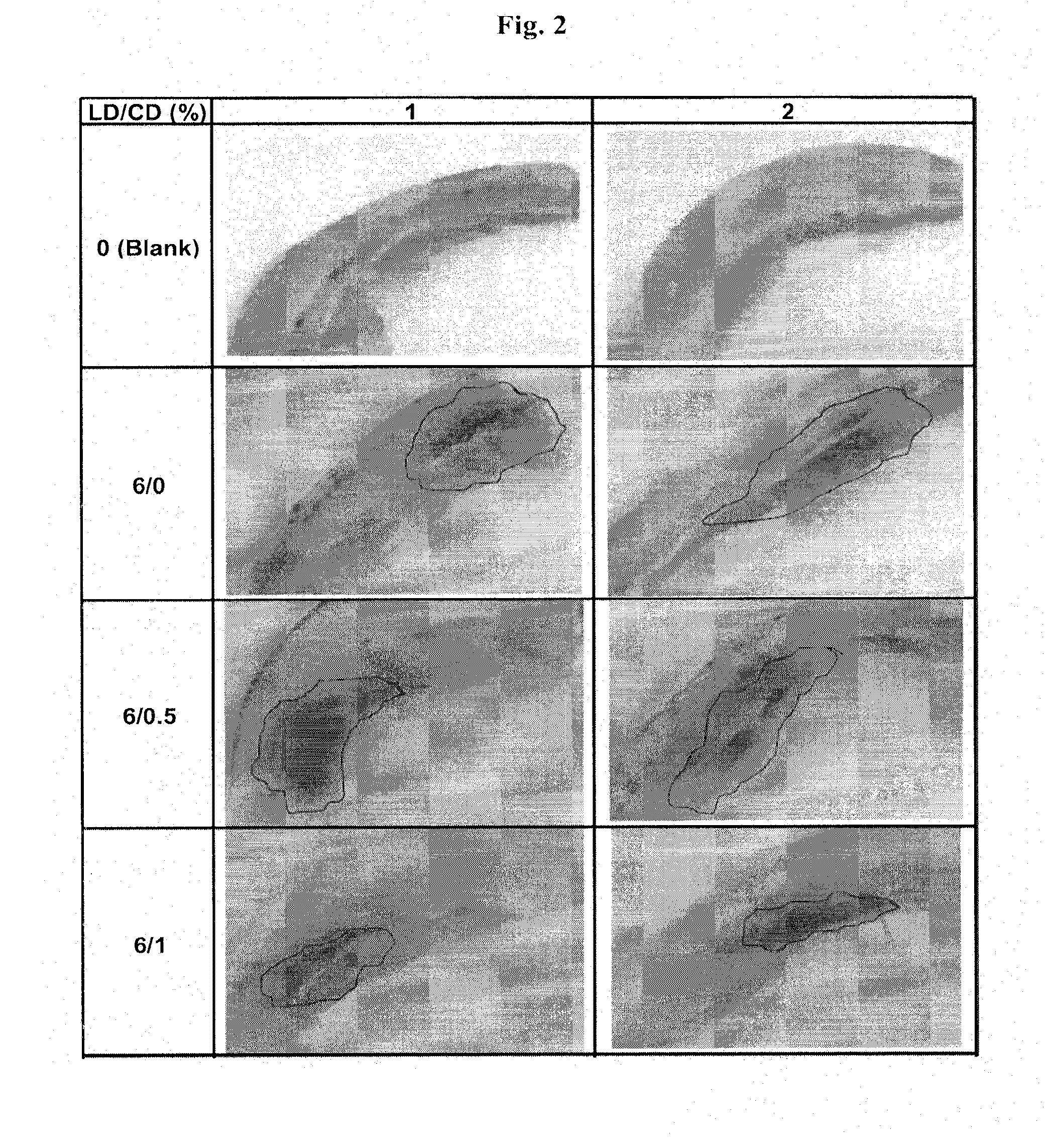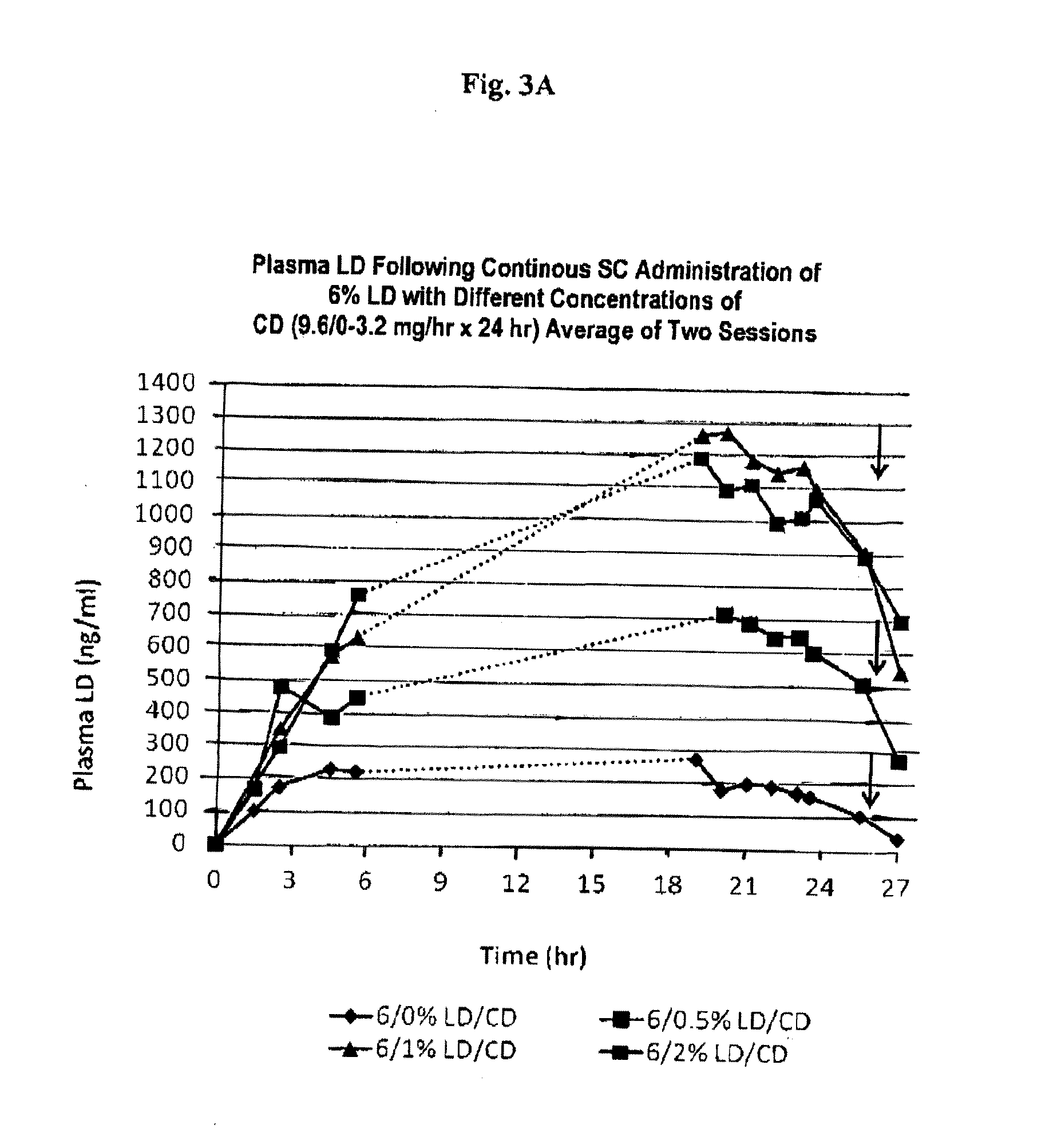Continuous administration of l-dopa, dopa decarboxylase inhibitors, catechol-o-methyl transferase inhibitors and compositions for same
a technology of catechol-o-methyl transferase inhibitor and continuous administration, which is applied in the direction of anti-noxious agents, applications, peptide/protein ingredients, etc., can solve the problems of complex long-term therapy, no more efficacy of preparations than standard tablets, and the effect of prolonging the effectiveness of a levodopa oral dosing regimen
- Summary
- Abstract
- Description
- Claims
- Application Information
AI Technical Summary
Benefits of technology
Problems solved by technology
Method used
Image
Examples
example 1
Preparation of Solutions / Formulation for Subcutaneous Administration
[0082]A. A 2% Carbidopa solution / formulation was prepared by adding pre-heated 0.1% Na-bisulfite solution to carbidopa [ASSIA Ltd.]. Arginine [MERCK] was added to obtain a final molar ratio of 1:1.2 CD (carbidopa):arg(argininine). The mixture was stirred at 60° C. until complete dissolution was obtained. Heating was stopped and the preparation was allowed to cool down to room temperature pH of 8.5. Solution was filtered using a sterile 0.22 μM PVDF membrane.
[0083]B. A 10% tolcapone solution / formulation was prepared as follows: a solution containing 10% tolcapone was prepared by adding the respective amount of H2O to tolcapone [Synfine Research], slowly adding arginine while stirring to obtain a final molar ratio of 1:1. The mixture is stirred until complete dissolution is obtained. After cooling down, the pH of the solution was 7.8.
[0084]C. A solution containing 10% entacapone was prepared by adding the respective a...
example 2
Formulation Preparation Procedure
[0088]Levodopa (LD) and carbidopa (CD) formulations can be prepared as follows. However, as shown in Table A, the method of preparation has significant impact on the resulting composition's physical and chemical stability.
[0089]Method #1(L-Arg solution): L-Arg and Na-Bis (Na-bisulfate) were dissolved in water. The solution was added to the LD and CD powders. The mixture was heated with stirring for 13 min at 75° C. until fully dissolved. LD / CD solution kept at room temperature (RT) for 10 min to cool down.
[0090]Method #2 (all powders together): All powders (LD, CD and L-Arg) were weighed and water with Na-Bis was added. Suspension was heated with stirring for 13 min at 75° C. until fully dissolved. LD / CD solution kept at RT for 10 min to cool down.
[0091]Method #3 (same as #2 without Na-Bis pre-heating): All powders (LD, CD and L-Arg) were weighed together and water was added. Suspension was heated with stirring for 13 min at 75° C. until fully dissol...
example 3
Effect of Arginine on Long Term Stability of Levodopa and Levodopa / Carbidopa Compositions
[0097]Liquid formulations with levodopa, carbidopa and arginine were prepared using the procedure outlined in Example 2, and comparative studies on formulations with a different concentration of arginine and / or an amino sugar (e.g., meglumine), and / or a sugar (e.g. dextrose), and / or a base (NaOH), or another basic amino acid (e.g. lysine, histidine) were prepared. The results are shown in Table B.
[0098]Table B indicate that arginine forms stable solutions with high concentrations of levodopa and carbidopa (>2.5%) at molar ratios <1:2.5, whereas with other basic amino acids LD does not even dissolve under these conditions. At molar ratios of LD / CD to arginine 1: <2, the solutions do not have long term stability, unless meglumine or another counterion is used, and meglumine may be used to reduce the molar ratio of arginine to LD / CD.
TABLE BAmino Acid (AA)OtherLD / CDMolarMolarConc.Conc.ratioConc.rati...
PUM
| Property | Measurement | Unit |
|---|---|---|
| temperature | aaaaa | aaaaa |
| thickness | aaaaa | aaaaa |
| temperature | aaaaa | aaaaa |
Abstract
Description
Claims
Application Information
 Login to View More
Login to View More - R&D
- Intellectual Property
- Life Sciences
- Materials
- Tech Scout
- Unparalleled Data Quality
- Higher Quality Content
- 60% Fewer Hallucinations
Browse by: Latest US Patents, China's latest patents, Technical Efficacy Thesaurus, Application Domain, Technology Topic, Popular Technical Reports.
© 2025 PatSnap. All rights reserved.Legal|Privacy policy|Modern Slavery Act Transparency Statement|Sitemap|About US| Contact US: help@patsnap.com



